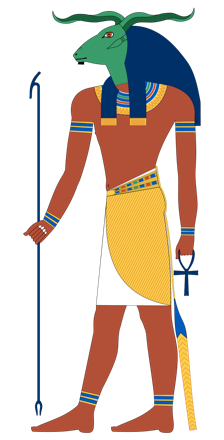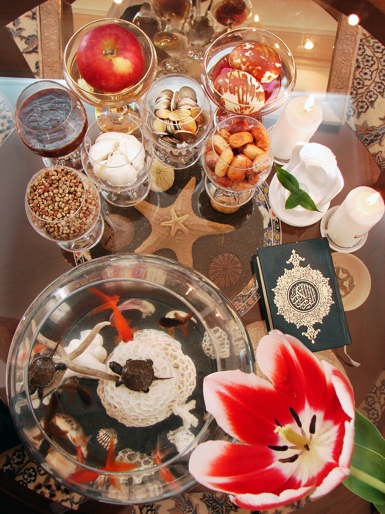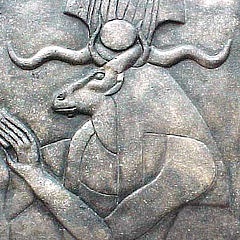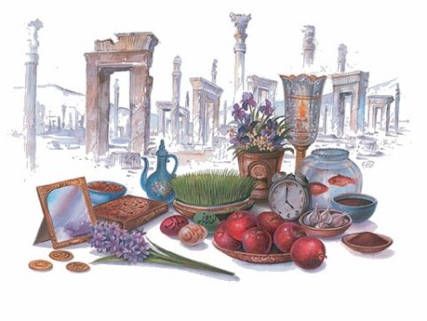Traditions:
Oleksa Voropay / Олекса Воропай
Traditions:
Oleksa Voropay / Олекса Воропай

From Oleksa Voropay, "Folk Customs of Our People" (1958, pp. 267-268)
Back in ancient times, long before the birth of Christ, asian and semitic peoples had the custom of placing on a table colored eggs on the day on which the new year began. They would give these eggs as gifts to their benefactors. The eggs were usually colored red; this may have been because, among the Celts, this color was considered the best color of all. The celts, as it is well known, had an influence on the peoples of Asia Minor. The new year in those days began on the vernal (spring) equinox1, about the same time of year that the Christians began to celebrate Easter.
For the Persians, the solar new year began on March 20th. On this day they greeted one another with krashanky. Similar customs were practiced among many European nations from ancient times--in France, Italy, Spain. This custom was brought to Europe, researchers think2, by the Jews, who would place boiled eggs on the table during the Passover meal. The eggs symbolized the Zyz, a mythological bird.
The natural historian Pliny3 wrote that the Romans used colored eggs in traditional games, religious ceremonies and in ritual purification (from sin).
Plutarch4, explaining the reason for such veneration of the egg by Romans, wrote: "The egg is the symbol of the creator of all nature, all powerful and encompassing everything."
The Egyptians saw the universe in the image of the egg. They tied the egg into their conception of the beneficent deity Knefu5 .

There was a temple to this god on Elephantine Island6, where his statue stood. On his head sat a hawk--a symbol of action; in his mouth this god held an egg--a symbol of fecundity and munificence. From this egg was born "ftas"--fire.
The Egyptian teachings about the egg were brought to Greece by Orpheus, who lived app. 1200 BC.

Charles Louis Balzac, Island of the Elephantine, view of the south temple, 1798-1801
The ancient Persians believed that, in the beginning, there was nothing, except god. At last the egg was born. Night covered the egg with his black wings, and Love7, the oldest son of the Creator, protected it. When the egg ripened, the universe emerged.
This creation myth came to Persia from the east; it was brought by the founder of the ancient Iranian religion Zoroaster8. The Persians sang about the egg in their holy songs. They also had the custom of coloring eggs (making krashanky). Besides that, they kept cast metal or carved stone eggs in their temples as a symbol of everything that is born.

Archeological digs in Ukraine, as previously noted, have frequently revealed painted ceramic eggs (in Poltavshchyna and Kyivshchyna). Thus, one can guess that the customs of making krashanky, and perhaps pysanky, came from the Persians. Granted, this custom may have come to us by two different roads--from the east or from the west9.

Illustration of a ceramic pysanka from Kyivan Rus
(from Erast Binyashevsky)
__________
1.In Ukraine, as in other eastern slavic nations, up until the XVII (17th) century the new year began in either March (as in Rome) or in September (as in Byzantium/Constantinople). Among document sources, from 1492 on, the September New Year began to predominate. From the year 1700, the new year begins on the first of January; it was then that the year was begun to be counted from the birth of christ. Before that the years were counted from "the creation of earth," which apparently occurred 5508 years before our epoch.
2.See A. Tereshchenko, VI, page 92, as well as other sources
3.Pliny the Elder--a Roman scholar (23-79 BC), he died during the eruption of Vesuvius. His "Natural History" (37 volumes) was an encyclopedia of
4.Plutarch–a Greek philosopher and historian (46 to 120 AD). His best known works include "Moralia" (about ethics and morality) and "Parallel Lives" (a series of biographies of famous Greeks and Romans).

6.TN: I am not sure what the source of the information about the temple and statue is. The temple is in ruins, and the statue long gone. The temple was built on the Elephantine Island, which lies in the Nile river across from the city of Aswan, at the first cataract, and divides the upper (Nubia) from the lower (Egypt) Nile. His temple was built here because Khnum was thought of as a god pouring out the Nile. He was regarded as the husband of Satis (who did much the same), and the father of Anuket, who was the personification of the Nile.
7.The word "Love" takes the masculine form here.
8.See A. Tereshchenko, VI, page 93
9.TN: Or it may have been a custom that sprang up indigenously. Egg decoration (and veneration) is so pervasive in world culture that it is difficult to believe that it had a single source.
(NB: all footnotes from original text except where noted “TN” – translator’s note)
Text © 2008 by Luba Petrusha. Be advised that the translation on this page and the English text is my work. It has been put here to share; if you wish to print it out for personal use, or for teaching purposes, please feel free to do so. If you wish to reproduce it on your website, or in another publication, please ask first. You can contact me via the e-mail link below.
Back to Voropay home page
Back to MAIN Pysanka home page.
Back to Pysanka Index.
Search my site with Google
A History of Egg Decoration
